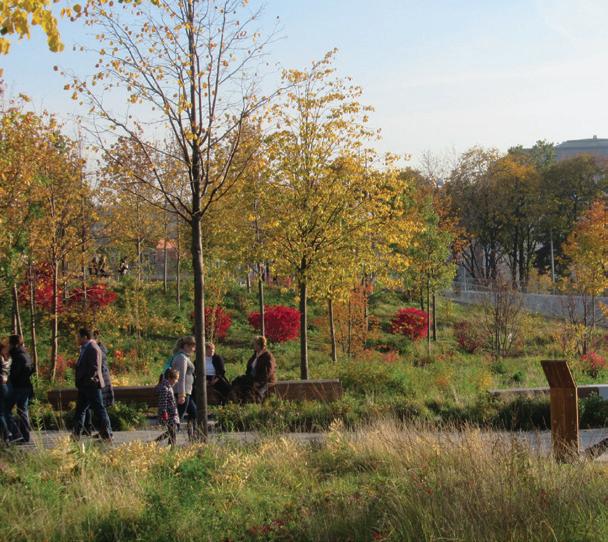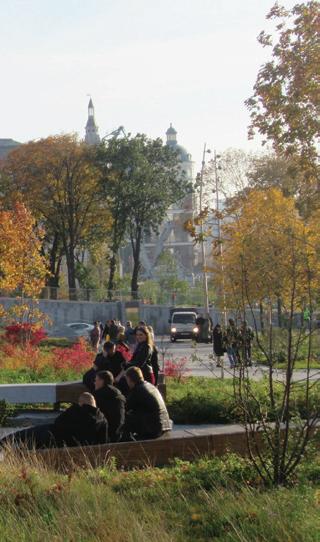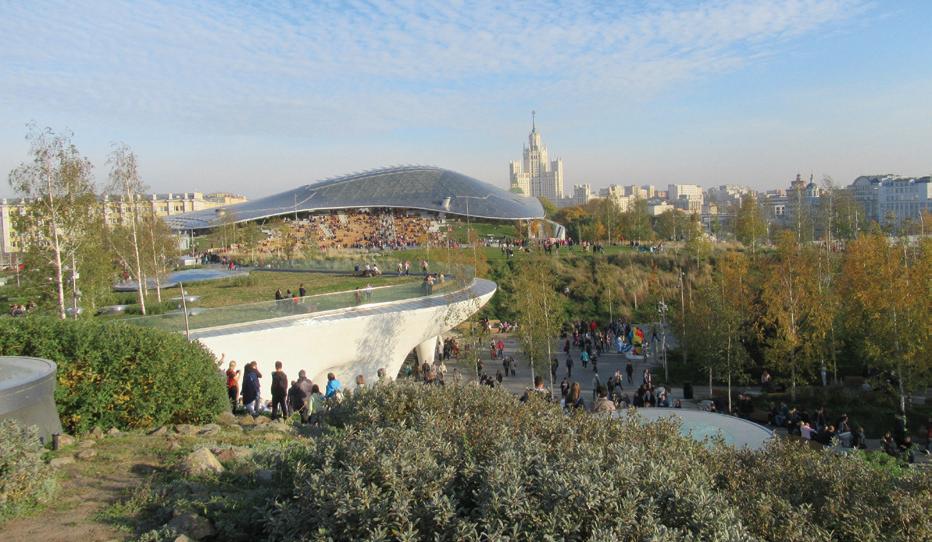
4 minute read
Call to Action
from April 2020
British Landscape architects respond to climate change adaptation and mitigation
By: Thea Gordon-Rawlings and Dr Alessio Russo
Advertisement
Recent extreme weather events, including floods in the UK, raging bushfires in Australia brought on by heatwaves and droughts has firmly cemented the imminent need to find solutions to mitigate and adapt to climate change. The 2018 Intergovernmental Panel on Climate Change (IPCC) Special Report: Global Warming of 1.5°C warns that the “impacts on natural and human systems from global warming have already been observed” and we urgently need to limit warming to 1.5°C. Landscape architects have a major role to play in this attempt to mitigate and adapt to climate change.
UK Landscape Architects have declared a climate and biodiversity emergency with an online petition http:// uk.landscapearchitectsdeclare.com/. Founding signatories of the petition include Churchman Thornhill Finch, Dan Pearson Studio, Gillespies, Grant Associates, Gustafson Porter + Bowman, J & L Gibbons, Kim Wilkie, Kinnear Landscape Architects, Landscape Projects, LUC, LDA Design, Nigel Dunnett, Studio Engleback, Townshend Landscape Architects. “The petition aims to raise awareness of the climate and biodiversity emergencies and the urgent need for practical action amongst our clients and supply chains,” explained one of the landscape architects. It also advocates for faster change in the landscape profession towards ‘resilient and regenerative design practices’, as well a higher governmental funding priority to support their action.
Other key aims include: Establishing climate and biodiversity mitigation, adaptation and resilience principles as the key measure of our industry’s success: demonstrated through awards, prizes and listings. Sharing knowledge and research to that end on an open source basis.
Evaluate all new projects against the aspiration to contribute positively to mitigating climate breakdown, and encourage our clients to adopt this approach.
Preserve and protect existing irreplaceable landscapes and habitats whilst protecting and optimising areas of functional and biodiverse landscape in all developments.
Floods in York, UK credits: Andy Falconer, Unsplash

Adopt a whole systems approach to landscape design recognising that soils, bacteria and mycorrhizal fungi are key factors for ecosystem survival and carbon sequestration. Work to provide assessment tools for life cycle costing, carbon usage, biodiversity gains. Develop and promote post occupancy tools and measures to assist in the management of landscapes.
In addition to working with mitigation, adaptation and resilience as primary tools, look to using regenerative design principles in the design of landscapes. Collaborate with architects, engineers, contractors and clients to further reduce construction waste. Promote low embodied carbon, and look to maximise carbon sequestering, responsible and sustainable use of water and biodiversity net gains in all projects. Minimise wasteful use of resources in landscape architecture and urban planning, both in quantum and in detail.
Several tools and models (e.g. i-Tree ECO, Climate Positive

Australian bushfires
Zaryadye Park in Moscow, (the design is based on the principle of “Wild Urbanism”), by Diller Scofidio + Renfro with Sergey Kuznetsov, & Hargreaves Associates & Citymakers. Credit: Alessio Russo, 2018.


Design) can be used to assess the carbon footprints for landscape architecture projects. In addition, we also need a holistic approach that should consider 4 principles: Materiality and Circularity, Adaptability, Net-gain and Nature connection.
Materiality and Circularity We will need to focus more upon selecting species of plants which are going to tolerate the future climatic changes which are forecast.
We will need to use more reconstituted materials, the construction industry being one of the most polluting on the planet.
Adaptability Following on from the previous point, we can up the amount of soft landscape in our designs to reduce the demand for polluting mineral products and the effects of transporting them and make our productive landscapes work harder for both people and the environment.
We can focus on plugging in feedback loops and creating designs which create virtuous cycles, utilising locally available waste streams to inform, form and feed our designs. We need to be thinking generations ahead in terms of stabilising soil and locking in carbon e.g. in trees, but also designing landscapes which can be deconstructed and reconstructed easily so that we can adapt them to changing conditions and reuse their constituent parts as they come to the end of their intended lifecycle.
Net-gain This principle for development will have a large impact upon the work of landscape designers. We tend to propose designs which are ecologically sound and which seek to enhance the natural environment and biodiversity anyway, but new policy will necessitate this, which may mean working more closely with ecologists - other countries may well follow suit.
Nature connection Creating wilder looking landscapes in cities and elsewhere so as to enhance biodiversity and slow climate change will require that landscape architects pay attention to how providing more space for wildlife to thrive can truly benefit people and be introduced sensitively, ensuring that people’s health, safety, mobility and enjoyment of human-centric settlements is not compromised. Landscape architects can also facilitate the connection between people and landscape designs which benefit nature and combat climate change by creating installations, public art and designing human-nature interactions.
Thea Gordon-Rawlings is a landscape architecture student at the University of Gloucestershire, UK, and Dr Alessio Russo is a Senior Lecturer and Academic Course Leader in MA Landscape Architecture, School of Arts, University of Gloucestershire, UK






